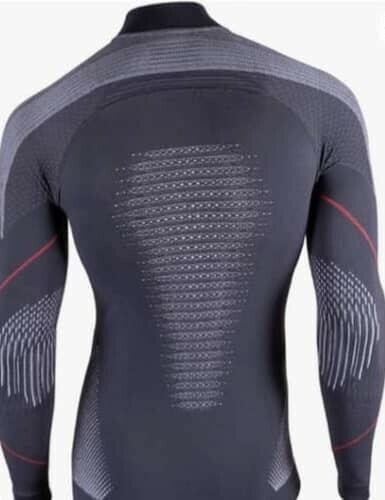I’m going to level with you: maintaining warmth during cold weather soccer practices is a pretty big deal.
This isn’t just about comfort; it’s about making sure your performance doesn’t take a hit and, more importantly, keeping injuries at bay.
When the mercury dips, muscles can become more rigid and less responsive, raising the risk of strains or pulls. Not to mention, the cold can be a real distraction, taking your head out of the game.
You’re going to find out about the ways cold affects athletic performance and why it’s so crucial for your safety to stay warm.
Let’s not gloss over the fact that proper thermal management is also a key element in maintaining concentration and agility on the field.
Now, I’m here to help you with practical advice on how to handle the cold effectively.
That’s going to include a look at the right gear, a pre-practice warm-up routine, and strategies for staying warm throughout your practice.
And guess what?
A lot of these tips are going to pay off in ways beyond just keeping the shivers at bay.
They’ll help enhance your game, ensuring that you’re ready to meet your training goals, no matter the weather.
Choose something that resonates with you and your playing style, and don’t worry too much about getting it perfect from the get-go.
You can always make adjustments based on your experiences and preferences. Now, speaking of gear, that’s where the real game-changer lies.
So let’s talk about how you can layer effectively to fend off the cold.
Strategic Layering: Expert Advice on Appropriate Soccer Attire
Now, if you’re going to stay warm during those brisk soccer practices, you’re going to need to know a thing or two about layering.
It’s not just about piling on your thickest sweatshirt and hoping for the best. There’s a science to this, and I’m here to walk you through it.
Base Layer
First up, let’s chat about your base layer. This isn’t just any old undershirt. You want something that’s going to work hard to pull sweat away from your body.
Moisture-wicking materials are your best friend here. They help you stay dry and warm, which is crucial because once sweat cools on your skin, you’re going to feel chilled to the bone.
Mid layer
Moving on to your mid layer, we’re talking about insulation. Thermal shirts, fleece lined tops – these are the heroes that trap heat and keep you toasty.
Remember, warmth is the game here, but don’t sacrifice movement for comfort. You’ll need flexibility for those fancy footwork drills.
Outer layer
Finally, your outer layer has to protect you from whatever Mother Nature throws your way – wind, rain, maybe even a bit of snow.
Jackets that are windproof and waterproof should be at the top of your list.
Trust me, there’s nothing like feeling invincible against the elements when you’re out on the field.
Warm-up to Win: Effective Pre-Practice and In-Session Warmth Strategies
I’m going to clue you in on the pre-practice warm-up: this isn’t just a box-ticking exercise, it’s a legitimate way to kickstart your body into gear.
To begin, dynamic warm-up routines are your best friend when it comes to cold weather soccer. Incorporate movements like leg swings, lunges, and side-steps to boost blood flow without going from zero to a hundred too quickly.
You want exercises that light a fire in your muscles and prepare your joints for what’s to come on the field.
Don’t worry too much about pushing yourself too hard at the start.
The importance of a gradual warm-up can’t be overstated: it’s like gently easing the car into a drive rather than slamming the pedal to the floor.
This gentle ramp-up in activity helps prevent injury, and trust me, it also does wonders for keeping your muscles toasty throughout the practice session.
Active movement
Now, once practice is in full swing, active movement is key. You’re going to find out about why staying on the move is crucial.
If there’s a lull in the action, don’t just stand there; keep the heat cranked up with light jogs on the spot or some dynamic stretches.
Why?
Because prolonged inactivity is the quickest path to cooling down, and that’s not what you want.
Hand warmers
Let’s talk about hand warmers for a moment. If you haven’t tried slipping these little lifesavers into your gloves during practice, you’re missing out.
They’re like portable campfires for your hands, and they can make a world of difference, especially on those days when the cold bites hard.
This includes companies such as HotHands or Grabber Warmers that provide convenient, disposable options for athletes.
Staying Hydrated and Energized in the Cold
When practicing soccer in cold weather, it’s essential to prioritize hydration and nutrition to maintain performance and prevent dehydration. Cold temperatures can deceive you into thinking you’re not losing fluids, but the dry air and increased respiratory rate can still lead to water loss.
Warm Drinks:
Consume warm drinks like tea, hot chocolate, or broth before, during, and after practice to:
– Maintain body temperature
– Keep fluids topped up
– Soothe the throat and airways
Aim for drinks with electrolytes, like sports drinks or coconut water, to replenish lost salts
Nutritious Foods:
– Fuel up with nutrient-dense foods like:
– Complex carbohydrates (oatmeal, whole-grain crackers)
– Protein-rich snacks (nuts, energy bars, jerky)
– Healthy fats (avocado, banana)
– Opt for warm, comforting foods like soup or energy-rich smoothies to:
– Provide sustained energy
– Support immune function
– Keep you satisfied and focused
Tips:
Drink water or warm drinks every 15-20 minutes during practice
– Snack on nutritious foods every 30-60 minutes
– Avoid caffeine and sugary drinks that can lead to energy crashes
– Experiment with different foods and drinks to find what works best for you
Concluding Thoughts: Embrace the Cold with Confidence
Well, you’ve now navigated through a roadmap of strategies designed to keep you warm and effective on the soccer field, even as the temperatures drop.
Maintaining warmth is about more than just comfort; it’s about protecting your body, enhancing your performance, and ensuring that you can play the game you love safely throughout the colder months.
I’ve touched on everything from the critical importance of layering appropriately to choosing the right gear and from executing a dynamic warm-up routine to properly cooling down after an intense session.
We’ve also explored the importance of staying hydrated with warm drinks and energized with nutritious foods, as well as tips for fostering a positive mental attitude that can carry you through chillier days.
Remember, taking the time to care for and maintain your soccer gear will not only make it last longer but also guarantee its reliability when you need it most.
Proper drying techniques can save you from the discomfort of damp gear and the potential health risks associated with it.
So take these insights, make them your own, and step onto the field with the confidence that comes from being well prepared.
Soccer isn’t just a fair-weather sport – with the right approach, the game goes on, no matter the season.
And now, I’m looking to you: Share your chilly practice experiences and the tips that have worked for you. Swing by the comments section and let’s keep the conversation going.
For more soccer insights and gear recommendations, don’t forget to check out our other blog posts.
Here’s to conquering the cold – one practice at a time!






Maintaining warmth during cold weather soccer practices is crucial, not just for comfort, but for optimal performance and injury prevention. Cold muscles are more prone to strains, and the chill can be a major distraction, pulling focus away from the game. This piece does a great job of highlighting why staying warm is essential and offers practical advice on managing cold conditions.
The tips on layering, starting with moisture-wicking base layers, insulating mid layers, and protective outer layers, are spot-on. They ensure that players stay warm and dry, which is critical for maintaining agility and concentration. The emphasis on a proper warm-up routine, including dynamic exercises, is also key to preventing injuries and maintaining muscle warmth throughout the session.
I found the suggestion to use hand warmers particularly useful; they can be a game-changer on those freezing days. Staying hydrated and energized with warm drinks and nutrient-dense foods is another great tip, as cold weather can often mask the signs of dehydration.
Overall, this guide is packed with valuable insights that can help players make the most of their practice sessions, regardless of the weather. It’s clear that with the right preparation and mindset, soccer can be enjoyed year-round. I’d love to hear others’ experiences with cold weather training and any additional tips they might have. Let’s keep the conversation going!